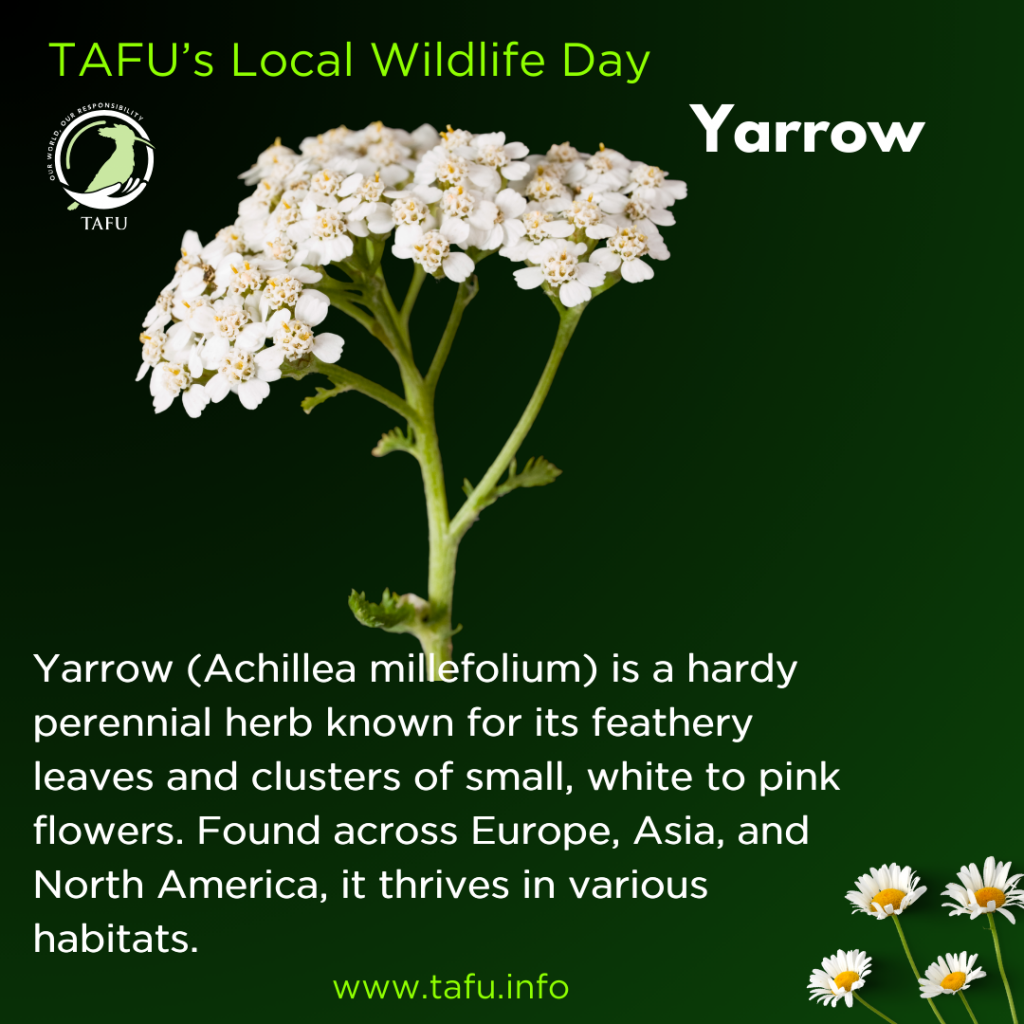Yarrow
As part of the countdown to TAFU’s Local Wildlife Day on the 11th of July – Species no. 39.
Stay tuned – 4 more days and 4 more species until then!
Yarrow (Achillea millefolium) is a perennial herbaceous plant, growing nearly up to a meter tall, easily recognised by its finely dissected, fern-like leaves and flat-topped clusters of tiny flowers. These flowers range in colour from white to pink and bloom from June to August, sometimes running to October, attracting a variety of pollinators, including bees and butterflies.
Yarrow is highly adaptable and can be found in a wide range of habitats, including meadows, grasslands, roadsides, and gardens. It prefers well-drained soil and full sun but can tolerate partial shade. Its ability to thrive in various conditions makes it a valuable plant for erosion control and soil stabilisation.
This plant has a rich history of use in traditional medicine. Yarrow has been used for centuries to treat wounds, reduce inflammation, and alleviate digestive issues. It contains compounds such as flavonoids and tannins, which contribute to its astringent and anti-inflammatory properties. Yarrow tea is often used to soothe colds and fevers, while its fresh leaves can be applied directly to the skin to stop bleeding.
Yarrow also plays an important ecological role. It attracts beneficial insects, such as predatory wasps and ladybugs. Additionally, it serves as a larval food plant for some butterfly species. Its deep roots help improve soil structure and nutrient cycling. Avoiding the use of chemical pesticides and herbicides can help to create a healthy environment for Yarrow and other native plants.

